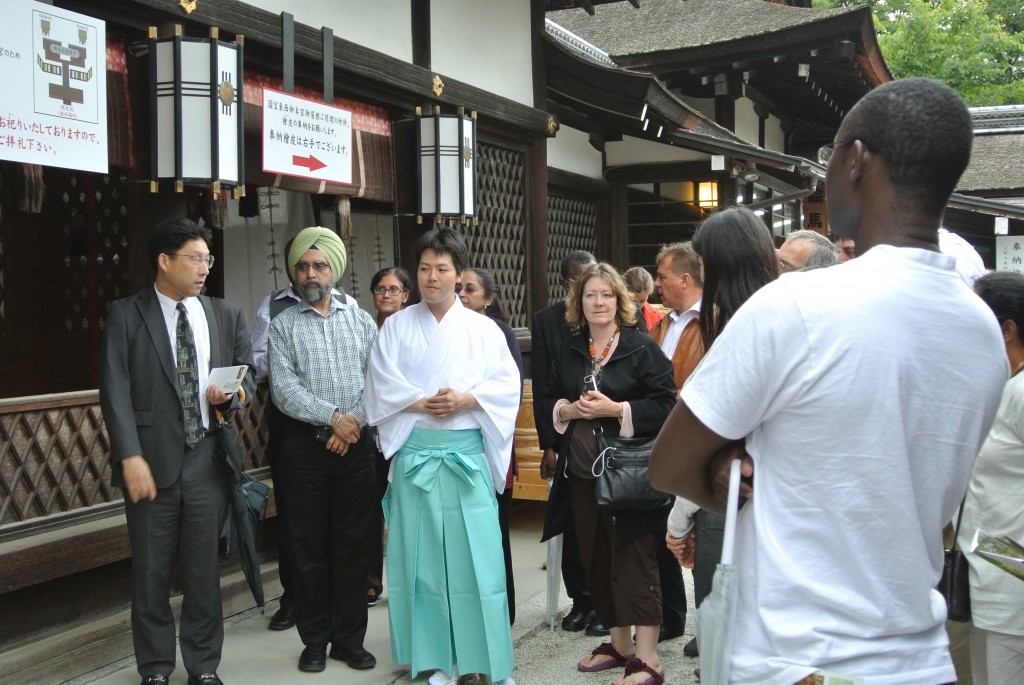
A priest at Shimogamo Jinja in Kyoto explains the shrine architecture to a group of visiting foreigners
Shinto trying to stay relevant in global, green era
Priests becoming more proactive in explaining cultural nuances of native religion to foreigners
BY TAKESHI NISHIDE KYODO JAN 15, 2013
One morning last fall, a group of around a dozen people of various nationalities and religious faiths visited Kanda Myojin Shrine in central Tokyo. The diplomats and their families from various countries in Europe, Latin America and Africa, including Luxembourg, Romania and Costa Rica, were participating in an Oct. 26-27 Shinto seminar for foreign envoys stationed in Japan.
The seminar, the first of its kind, was organized by the Association of Shinto Shrines, the umbrella organization for the 80,000 or so shrines scattered across Japan. On the first day, the participants received lessons on the Shinto elements of life in Japan, such as the practice of visiting a shrine at the beginning of a new year and the traditional “shichi-go-san” rite of passage for children aged 3, 5 and 7.
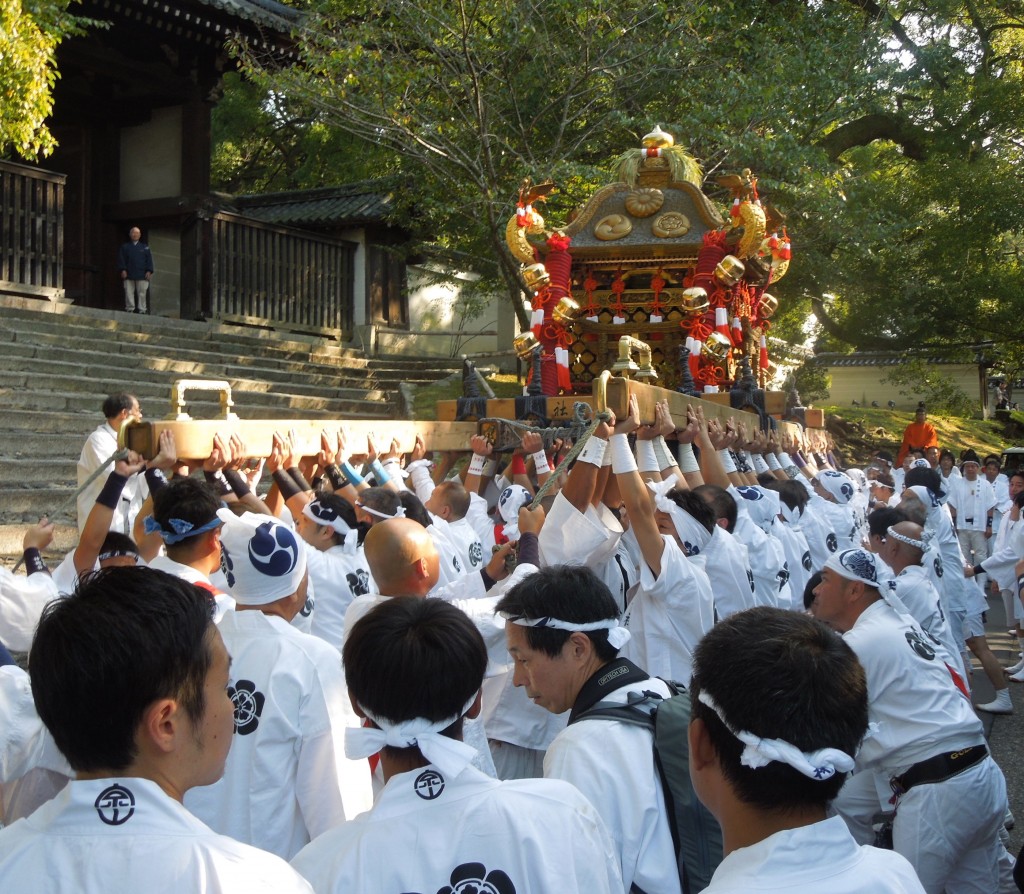
The annual outing of the mikoshi forms one of the key events in Shinto
During the group’s visit to Kanda Myojin on the second day, the participants went through the rituals of worship and then practiced taking part in carrying “mikoshi” (portable shrines) in a procession while wearing traditional happi coats and making the traditional “wasshoi” chant.
One diplomat welcomed the occasion as a hands-on cultural experience, while another said the seminar offered a glimpse into how the Japanese look at life and nature via the influence of Shinto.
The seminar was one of several unrelated initiatives intended to promote the understanding of Shinto outside Japan and use it as a means of cultural exchange in an era of globalization.
Katsuji Iwahashi, a lecturer at Kokugakuin University in Tokyo, is teaching a course to help would-be Shinto priests develop English communications skills.
Iwahashi is frequently asked by foreigners about the concept of deities in Shinto. He explained that the people may recognize a god wherever they feel the presence of something supernatural, referring to the ephemeral nature of Shinto gods compared with the distinct identity of the Christian or Muslim God.
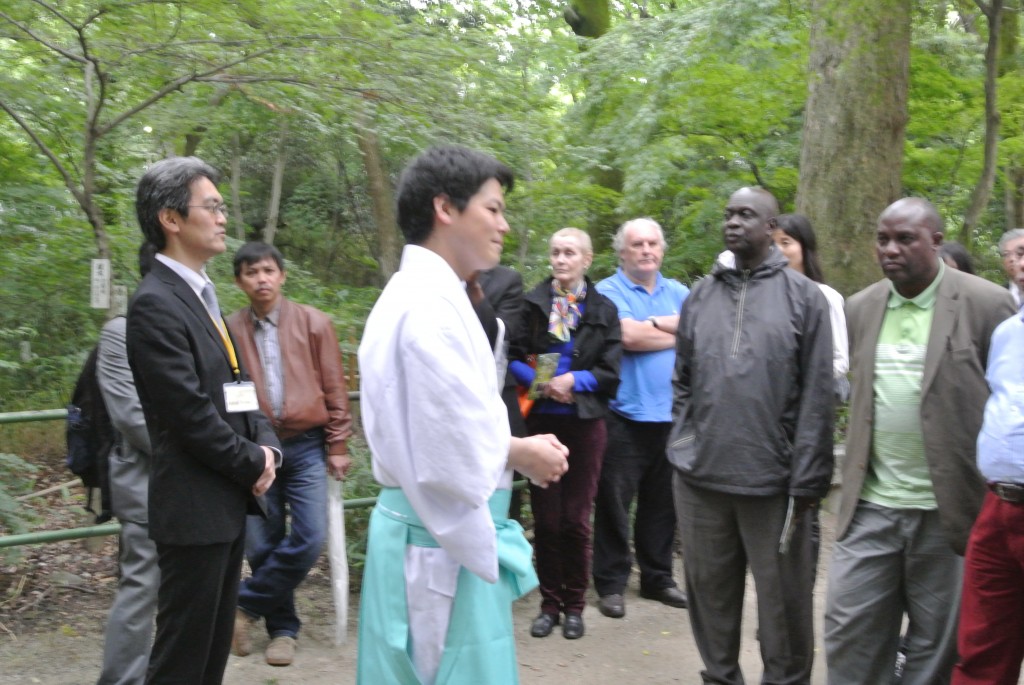
Iwahashi Katsuji (suit, left) translates for a priest explaining Shinto matters to foreigners
Iwahashi believes the vagueness that is the hallmark of Shinto can be effective in dealing with the demands of modern society. “I am not trying to spread Shinto around the world. I’m hoping to help people understand the Shinto mind that is different from digital thinking,” he said.
In the ancient capital of Kyoto, Mitsutaka Inui, a priest at Kamigamo Shrine, a World Heritage site, is trying to get foreign tourists to become familiar with the religion.
When receiving foreign visitors, Inui explains in English the history of the shrine, as well as some of the rituals and concepts unique to Shinto. “Shinto is a religion of experiences,” Inui said, stressing the importance of engaging in practical activities. He is considering a plan to launch a sleepover Shinto experience program for foreign visitors that involves such activities as sweeping the shrine precincts early in the morning and hand-copying religious writings.
Inui, who was born in a salaried worker’s family but who has a Shinto priest among his ancestors, decided to become a priest while in junior high school. Instead of enrolling with a Shinto-affiliated university as prospective priests usually do, Inui studied at Ritsumeikan University, a nonreligious institution. As he wanted to develop a global perspective, Inui devoted himself to studying Esperanto, an artificial language created as a means of international communication, as an extracurricular club activity.
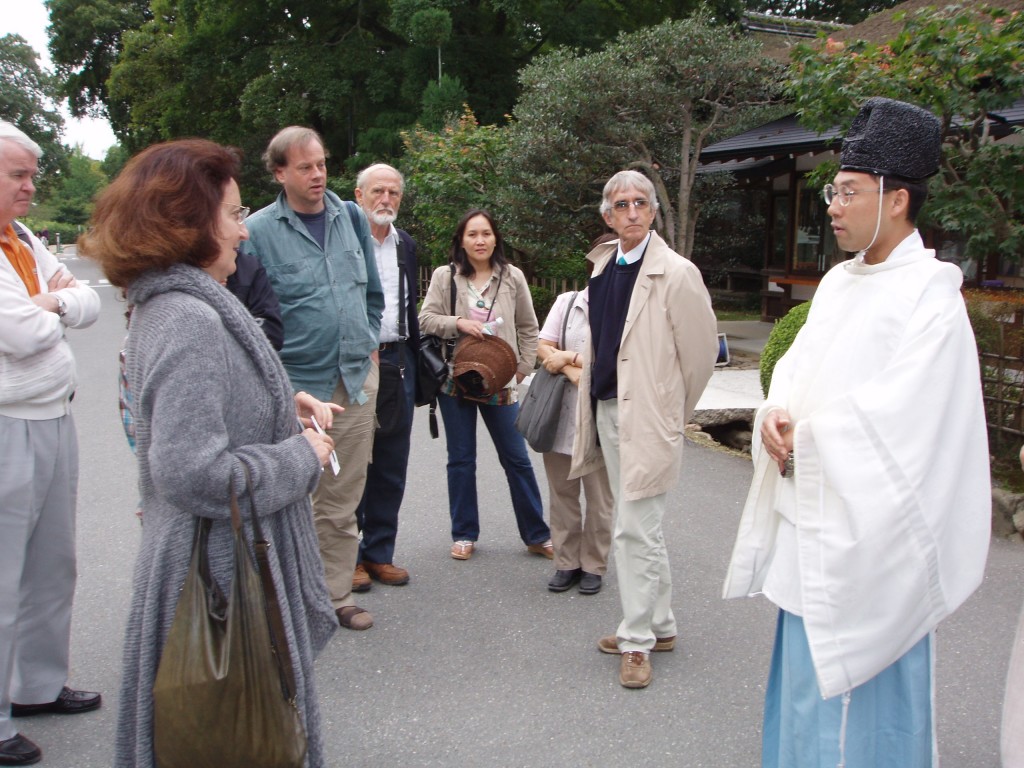
Inui Mitsutaka (right) explains Shinto matters to a group of foreigners at Kamigamo Jinja in Kyoto
After becoming a priest at Kamigamo Shrine, Inui saw tour guides give foreign tourists misleading information about Shinto by explaining it in terms of monotheism. He came to the conclusion that the best way to prevent foreign visitors from developing erroneous perceptions is for priests themselves to communicate with them, so he strived to develop his English skills at the Interfaith Center of New York while working there under a temporary transfer program.
Inui believes Shinto can continue to gain people’s interest as something that transcends the everlasting march of science and technology. “The thinking that we must not pollute water because a god resides in it helps to keep water and nature in pristine condition,” he said.
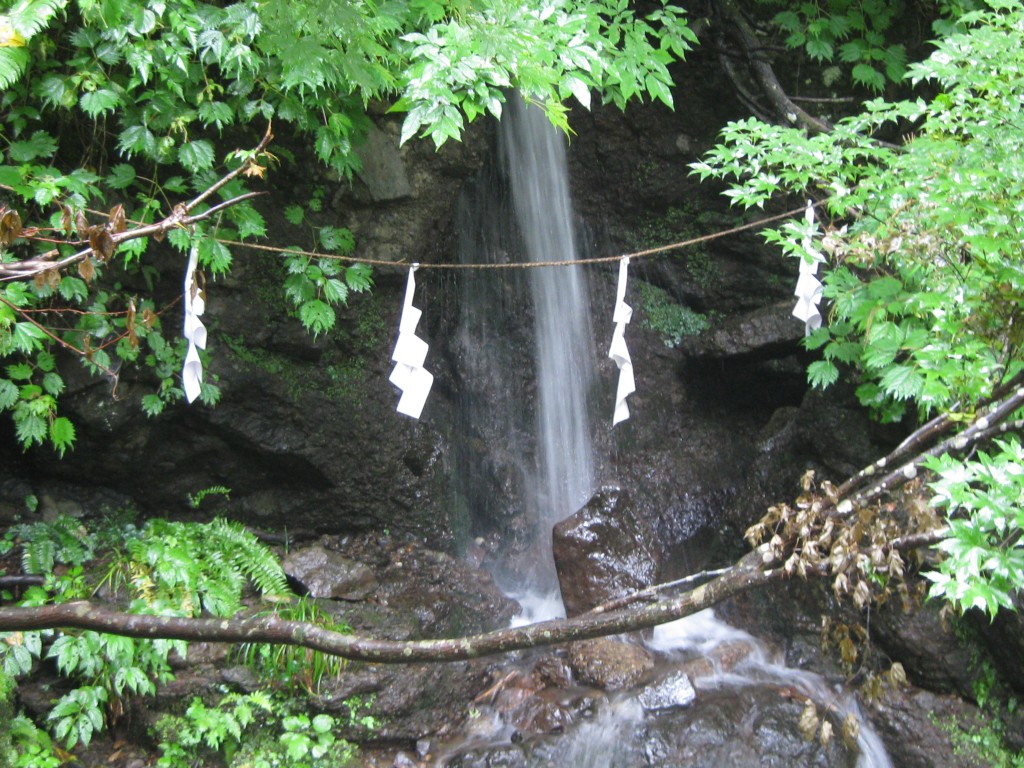
"The thinking that we must not pollute water because a god resides in it helps to keep water and nature in pristine condition." - Inui Mitstutaka

Leave a Reply